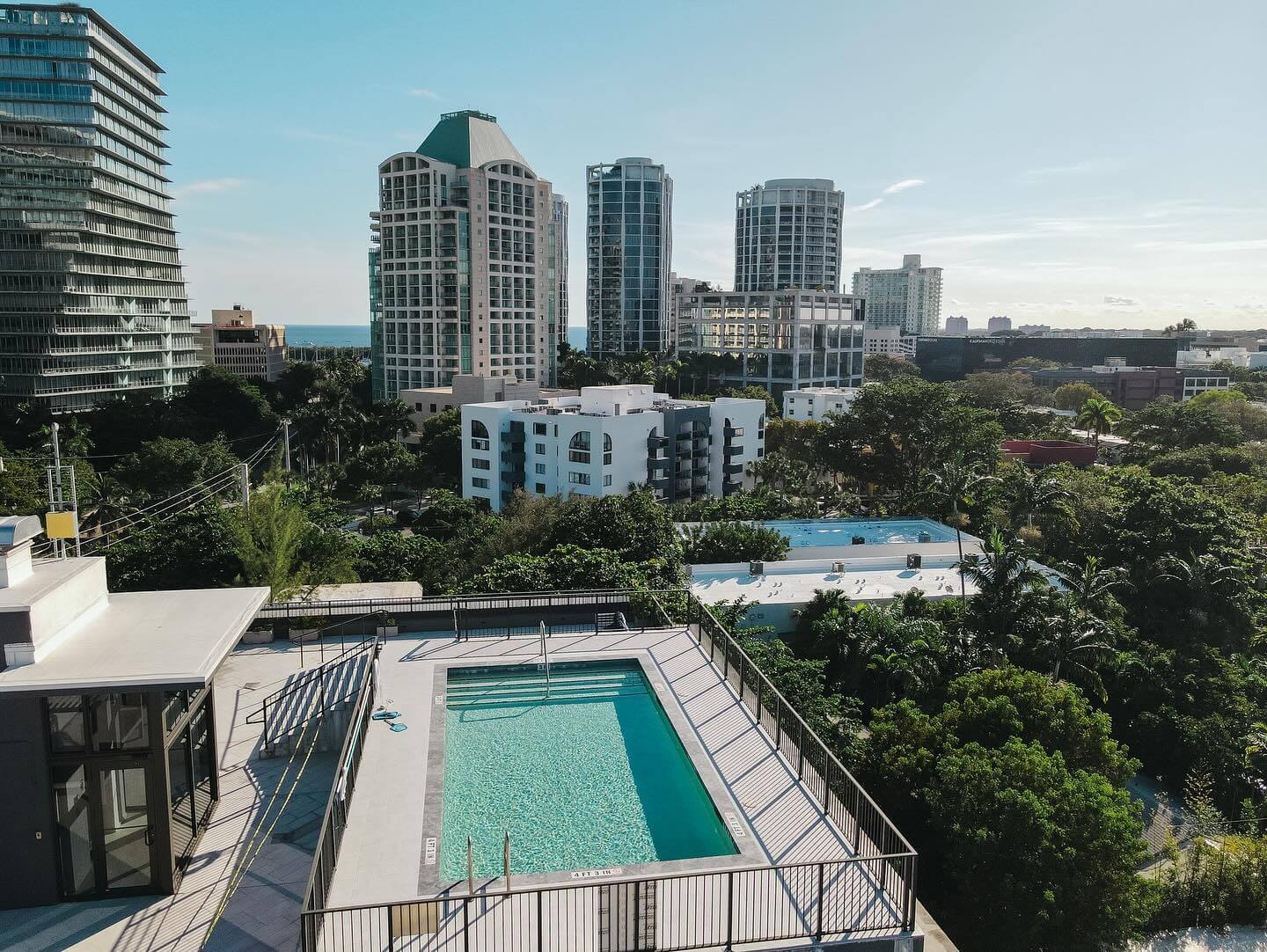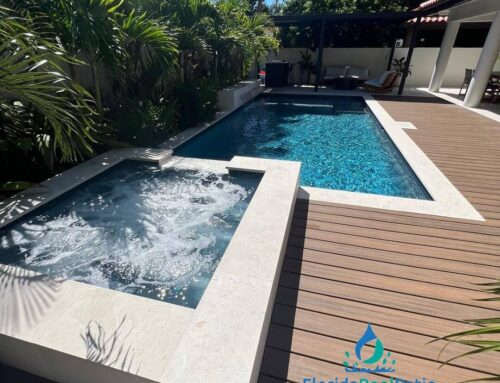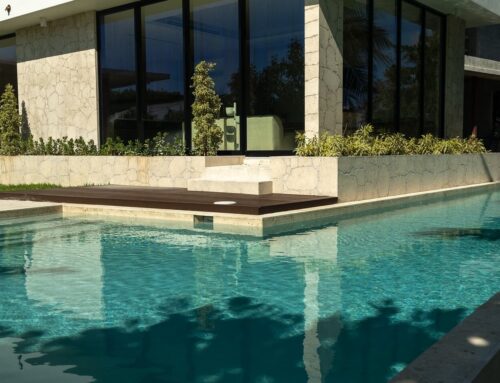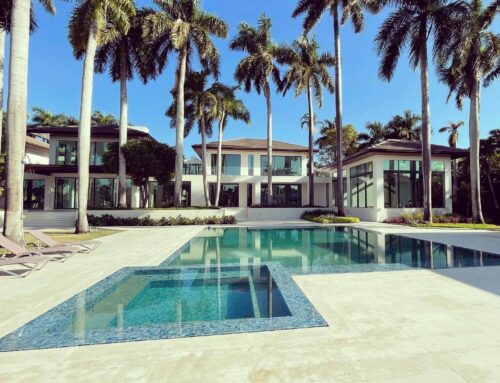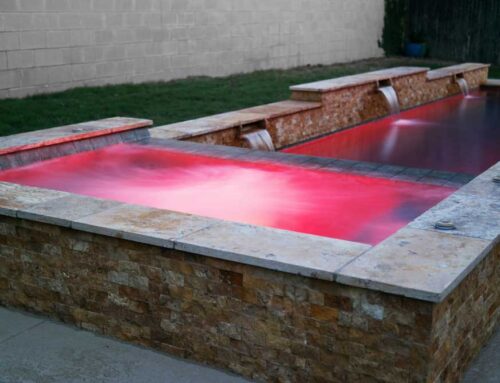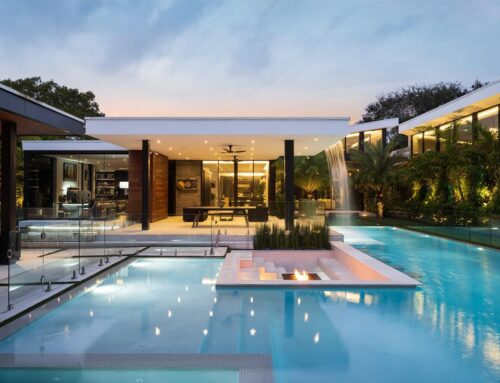Taking care of your swimming pool is important. Make sure you know the basics for maintaining your above-ground, or saltwater pool. If you understand how your pool works, how to keep it in good shape, and how to plan, you can tackle any pool problem that comes up. Regular maintenance is the key!
The Basic Components of a Swimming Pool
Four components of every type of pool require regular maintenance. The four components are:
1. Pool Water
The water in your swimming pool might seem simple, but it’s crucial for a pool that lasts a long time. Clear and balanced water protects you and your family from pollutants and keeps your pool in good shape. It prevents costly problems like corrosion or mineral buildup, making your pool last longer. Keep your water clean and balanced for a lasting and enjoyable pool experience.
2. Pool Interior
Your pool liner is constantly in contact with the water and anything that enters your pool. Keep these surfaces clean, and free of mold, algae, and debris. This will keep your pool safe and clean.
3. Pool Filter System
The pump in your pool is like its heart, and it works just like your heart does for your body. It circulates the water, just like your heart circulates blood. And the filter in your pool is like its liver it takes out dirt and bacteria, similar to what your liver does with your blood.
Both the pump and filter protect you and your pool. Without a working filter, your pool would get really dirty. There are different types of filters, like cartridge, sand, or diatomaceous Earth (D.E.) filters. If your pool uses saltwater, you can also use a chlorinator. Each type helps keep your pool clean and safe.
4. Pool Skimmers & Returns
Your skimmers, different from the net skimmer (the cleaning tool on a telescoping pole), pull water into the filter for cleaning. The returns then push the cleaned water back into your pool. It’s essential to keep them clean, similar to how your veins work best when they’re clear.
As time goes on, you might encounter unique challenges in maintaining your pool. If you understand these four components pump, filter, skimmers, and returns – you’ll be ready to handle most pool maintenance tasks.
GET A FREE QUOTE
CONTACT US AT (305) 590-5263
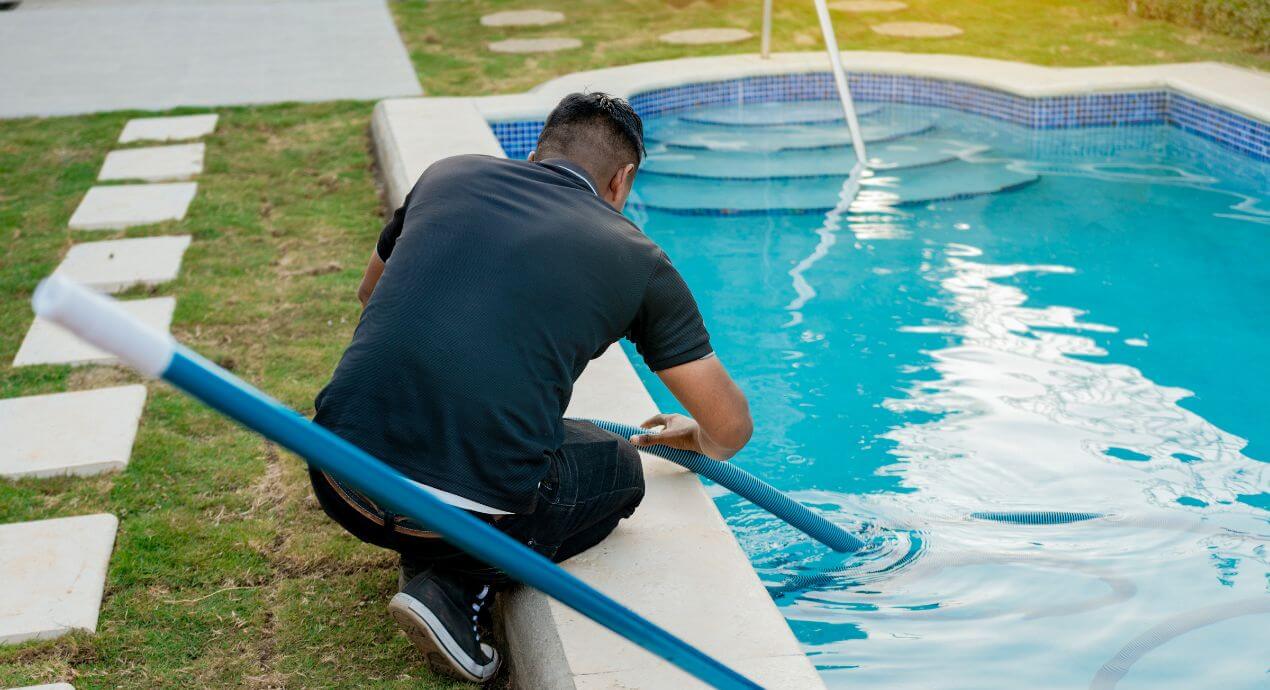
The Three C’s of Proper Pool Maintenance
Three simple, but essential concepts are the foundation for effective pool maintenance: circulation; cleaning; and chemicals.
1. Good Water Circulation
Keeping the water moving in your pool makes it cleaner, safer, and clearer. Good pool circulation creates a healthy and safe place to swim.
When circulation is good, you won’t often deal with cloudy water or pool algae. To make sure the water keeps moving, run your filter and pump every day.
How long should you run your pool pump? Ideally, you should run it 24 hours a day, seven days a week. Your filter should run for at least 10-12 hours each day. This helps clean and keep your pool safe by moving the water several times.
Another crucial part of good pool circulation is backwashing your filter. Backwashing means reversing the water flow to send dirty water, contaminants, and debris to the waste port. It’s vital to learn the right way to clean your pool filter and make it a regular part of your pool maintenance routine.
2. A Pool Cleaning Schedule
You’ve made cleaning your pool easier if it circulates properly. You’ll need to put in some elbow grease. You’ll need the following basic tools:
- Net skimmer
- Pool brush
- Pool Vacuum
Mother Nature and people who use your pool bring in all sorts of things, from leaves and mold to unexpected visitors like ducks or frogs, and even products like shampoos and perfumes. Cleaning your pool is crucial for safe swimming, especially considering the risk of bacterial contaminants.
Every week, it’s a good idea to brush, skim, and vacuum your pool. Doing this helps keep the water clean and free of debris.
To make cleaning easier, try some unconventional tricks. Tossing tennis balls into the pool can soak up surface oils from things like suntan lotions and cosmetics. For a finer filter, wrap your skimmer’s baskets in pantyhose. This catches more contaminants than just using a skimmer alone. Keeping your pool clean ensures a safe and enjoyable swimming experience.
3. Balancing Your Water Chemistry
Avoid using Bunsen burners; you don’t need to worry about pool chemistry. Basic pool chemistry, although essential for maintenance, can be surprisingly simple.
The most important tool for taking care of your pool water is a water testing kit. Just like you wouldn’t taste your stew before seasoning it, before adding chemicals to your pool, test the water. Understanding what’s in your pool water and what’s missing is the first step in keeping it balanced. Testing regularly helps maintain a healthy and enjoyable swimming environment.
Three important components of pool water chemistry include:
- pH level: This measures how acidic or basic your pool water is. Low pH is acidic, while high pH is basic. Aim for the ideal range of 7.4 – 7.6.
- Alkalinity: It acts as a buffer to prevent extreme changes in acidity or basicity. The recommended range is 100 to 150 parts per million (ppm), and you can raise it using baking soda.
- Levels of sanitizer: This indicates the amount of chlorine, bromine, etc., in your pool water. The correct levels depend on the type of sanitizer you use. Regularly check and adjust these levels for a safe and clean swimming environment.
You can add chemicals to your water to adjust the pH, alkalinity, and sanitizer levels once you have determined your levels. Follow all directions and make sure to understand what each chemical will do and how it will affect the water and people who swim in it before adding it.
Don’t Forget to Add Pool Shock!
Your sanitizer might need a boost now and then, especially after heavy rain or when many people use the pool. Add pool shock regularly to keep the pool clean, even if the sanitizer is already at its maximum level.
Create a Maintenance Schedule
Your to-do lists might feel overwhelming as you get to know your pool better. A pool maintenance schedule helps you stay organized making sure you don’t miss any important tasks.
By following the schedule, you can stay on top of basic maintenance and plan for more advanced tasks, like closing your pool or taking care of it during the off-season. It also helps you get your swimming pool ready for the pool season. Stick to your schedule to keep your pool in great shape all year round.
Keep It Simple
You can tape your schedule of pool maintenance on your wall, your fridge, or anywhere near your pool. Write down the names of those who are available to help with the maintenance on specific days.
3 Tips for Vacation Pool Maintenance
As many of our readers love summer vacations and own swimming pools, I want to share tips on maintaining your pool while you’re away. This was a common question during my time at the pool store, and it’s not as tricky as you might imagine.
1. Find a Neighbor or a Friend
Keep your pool clean when you are away.
A pool owner is the ideal candidate. This person should know exactly what to do. Give your neighbor or friend a checklist and ask them to check the pool every day.
- Empty your skimmer baskets
- The pool surface can be skimmed
- Check the filter pressure.
- Use a test kit or test strips to test the water.
- Add any chemicals necessary (only if you know what you’re doing).
2. Get a Pool Pump Timer
Your pump should already come with a timer, but if it doesn’t, I suggest getting one. Timers are crucial for pool maintenance.
Set the timer to run the pool for at least 8-12 hours each day. If possible, divide the time. It’s okay if it runs 24 hours a day, but it’s essential to run the filter and pump to keep your swimming pool clean. Using a timer is better than relying on a person for this task.
3. Get Your Water Checked Before You Go
Bring a small sample of pool water to a local pool store for specialized testing.
When you have it checked, make sure you fix any problems before you leave. Make sure your pH, alkalinity, and sanitizer levels are balanced.
- pH: 7.4 – 7.6
- Alkalinity: Between 100 and 150 parts per million, with 125 being ideal
- Calcium Hardness: For general pools, 175ppm to 225ppm; for concrete and plaster pools, 200ppm to 275ppm
- Chlorine Pools: Maintain 1 to 3ppm
- Bromine Pools: Keep levels from 3 to 5ppm
- Biguanide Pools: Maintain levels between 30 and 50ppm
- Saltwater Pools: Aim for 0.5% chlorine
- Mineral System Swimming Pools: Maintain 0.5% chlorine levels
Make sure that your pool is crystal clear and clean before you depart.
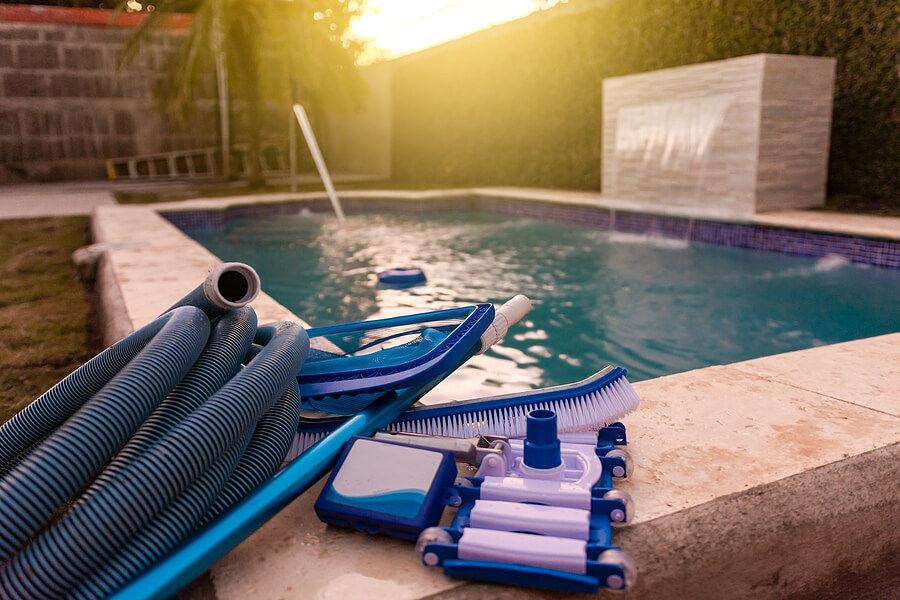
Wrapping Up Your Pool Paradise Maintenance Guide
Swimming pools are a fantastic way to enjoy the sunshine right at home. While they do need regular care, you don’t have to spend all your time with a vacuum or a chemistry set.
When you know how your pool works, what care it needs, and what plan, you might even feel proud of keeping it in great shape. Regular and careful maintenance means you can not only have fun swimming but also enjoy peace of mind.
And speaking of expertise, if you’re looking for a partner in creating and maintaining your dream pool space, consider checking out Florida Pool Patio. Their commitment to excellence and passion for pool perfection might just be the missing piece to elevate your swimming experience. After all, a pool isn’t just a feature; it’s a lifestyle.
Here’s to a fantastic time in your own aquatic paradise – with a little help from Florida Pool Patio. Dive in and enjoy the bliss!
Pool Construction, Remodeling, Repair, and More
GET A FREE QUOTE
CONTACT US AT (305) 590-5263

